The royal city of Luang Prabang (ຫລວງພະບາງ) in Laos is considered one of the nicest cities in Southeast Asia. And that is absolutely right: the city is atmospheric, beautifully situated on the Mekong River and between the hills and there is a lot to see and do. The combination of beautiful nature, a royal appearance and colonial history makes Luang Prabang a unique destination in Asia. Are you planning a visit to Luang Prabang? Then read on and discover in this historical travel guide what makes this city in Laos so special…
What would you like to know about Luang Prabang in Laos?
- A brief history of Luang Prabang
- Sightseeing – 7 interesting places in Luang Prabang
- Accommodation – Where to stay?
- Transport – How to get there?
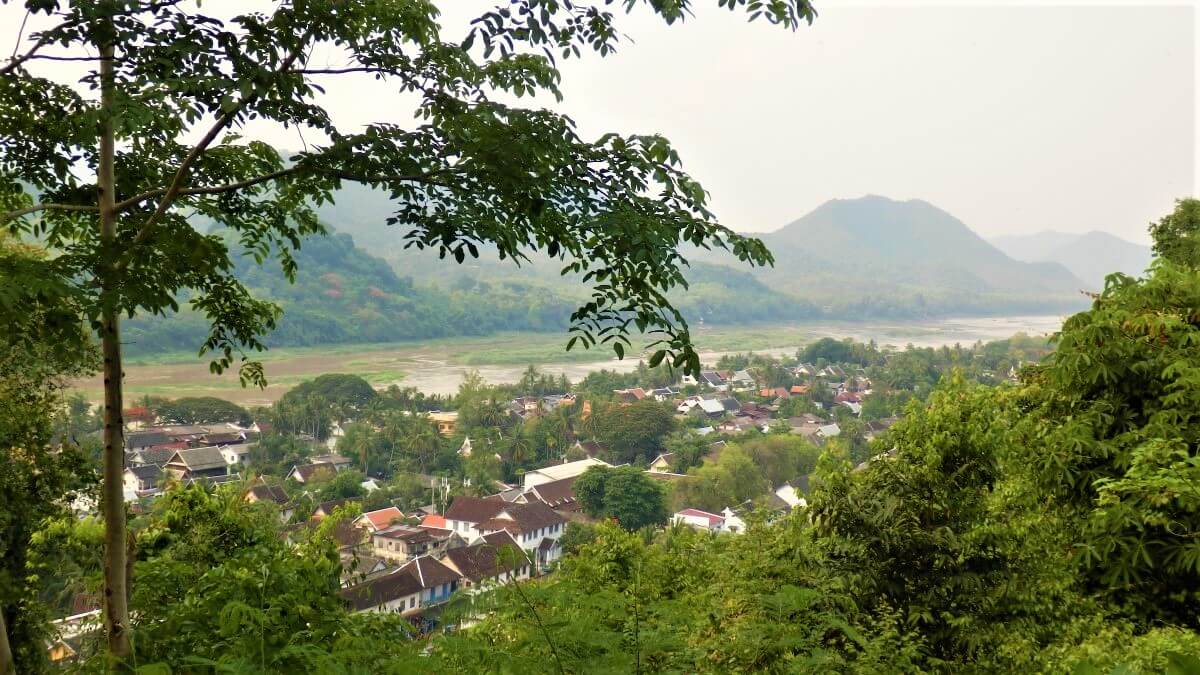
A brief history of Luang Prabang
Before you visit Luang Prabang, there are a few things you should know about the history of this city. For example, in the past Luang Prabang has been part of several empires that came and left. The first name people gave to this settlement was Meuang Sawa. Sawa was another word for Java and chosen after the Javanese invasion of the Kingdom of Chenla in the sixth century AD. The name of the town changed to Meuang Xieng Thong between the tenth and twelfth centuries. It was a time when Luang Prabang was caught up in battles between different kingdoms.
It was finally King Fa Ngum who conquered Meuang Xieng Thong in 1353. He was king of the great kingdom of Lan Xang, which meant “land of a million elephants. By many Laotians, this is considered the forerunner of present-day Laos. At its peak, Lan Xang also held parts of northeastern Thailand, Cambodia, and Vietnam. The capital of the kingdom became Meaung Xieng Thong and the king resided in this city. After King Fa Ngum of the Khmer Empire received a Buddha statue named Pha Bang, the name changed to Luang Prabang. Luang in this case means royal. In 1545, Vientiane became the new capital.
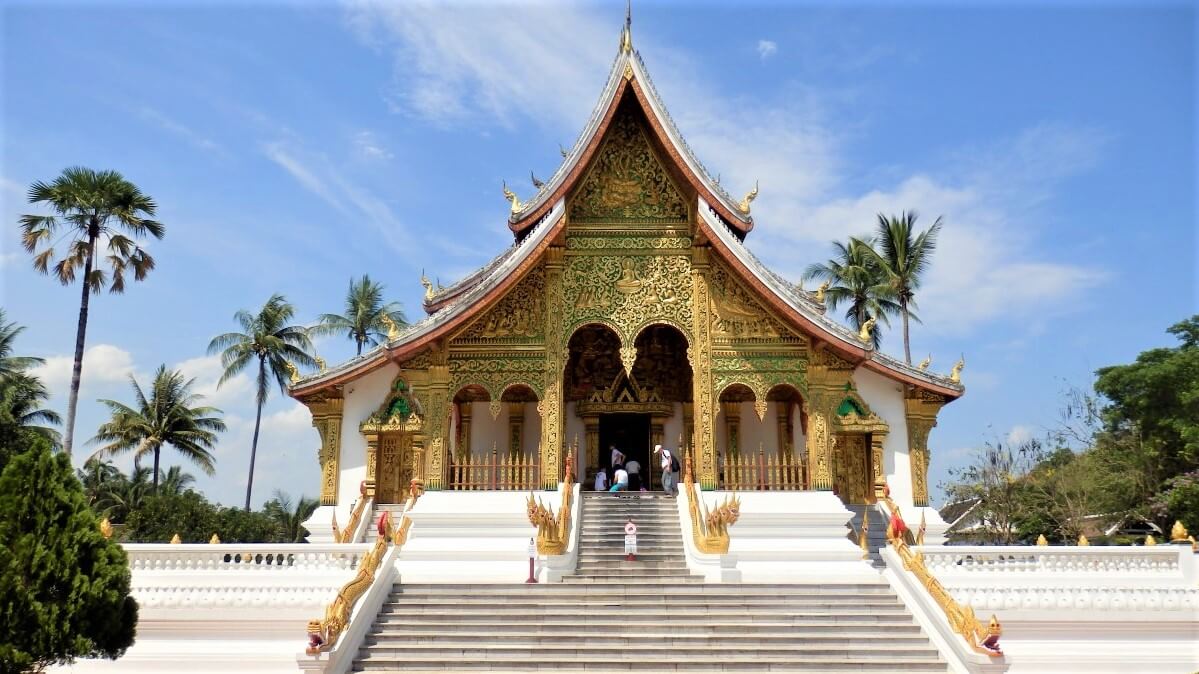
The Kingdom of Luang Prabang
In 1707, the kingdom of Luang Prabang was founded after the then king of Ayutthaya split the neighboring Lan Xang into two parts. The king was afraid that Lan Xang was becoming too powerful and could pose a threat to his authority. At this time, present-day Laos consisted of two kingdoms, the other being called the kingdom of Vientiane. At the end of the nineteenth century, Luang Prabang faced French rule. The kingdom became part of the Union of Indochina. This is a name for the countries that were a part of France at that time, including Vietnam and Cambodia. You can still find a lot of the French presence in the center of Luang Prabang in the form of colonial houses.
After World War II, Laos emerged as we know it today. The king of the old Luang Prabang kingdom became the new king of the country. His son followed him in 1959, but it was a tumultuous time with the Vietnam War in which Laos was also involved. The king himself was pro-French and a fierce opponent of communism. When the communists gained power in 1975 he was forced to resign. This meant the end of the Kingdom of Laos.
In 1978, the communists decided to deport the king to the border with Vietnam, fearing that their opponents wanted to restore the kingdom. During this operation, the king and his son died, leaving no succession to the throne. Since then, the country has been officially called the Lao People’s Democratic Republic with Vientiane as its capital. Fortunately, however, Luang Prabang remains the royal city of the country.
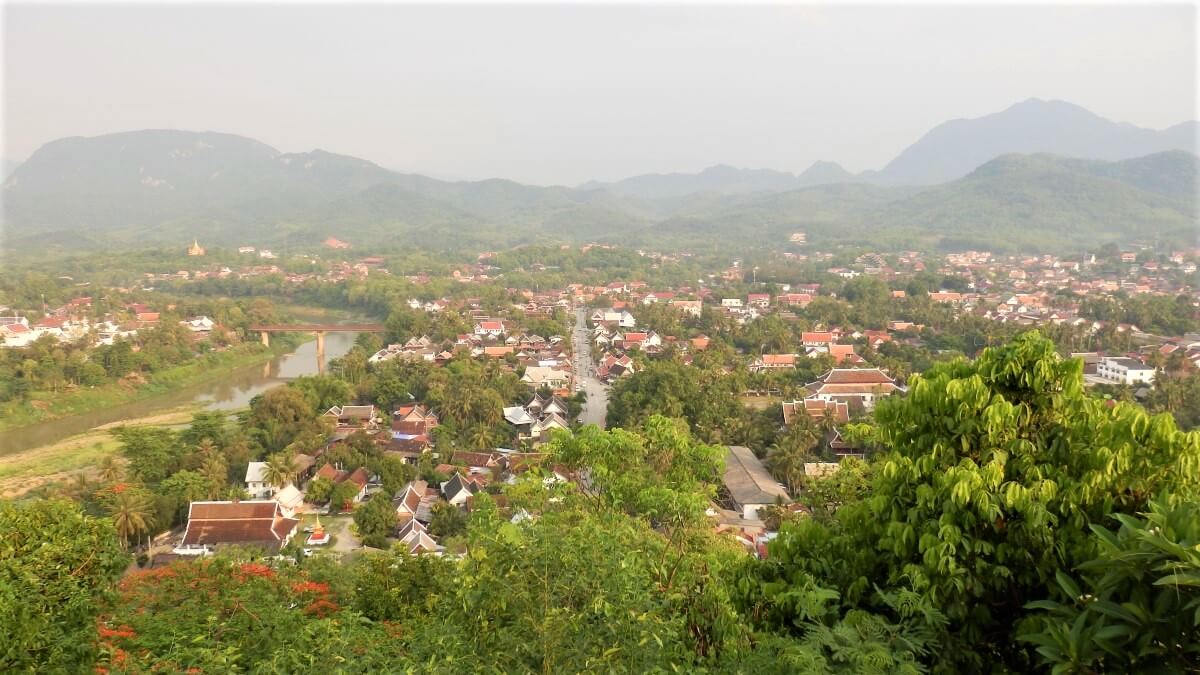
Sightseeing – 7 things to see and do in Luang Prabang
There is so much to do in and around Luang Prabang that you could easily spend a week here. And many tourists do, if only to relax and go out in the city. For some of the sights you depend on public transport or you can rent a motorcycle to explore the beautiful surroundings on your own. There are also many hostels that can arrange a mini-tour to the beautiful Tat Kuang Si Falls for a small fee. Below is a brief overview of the best sights in this royal city.
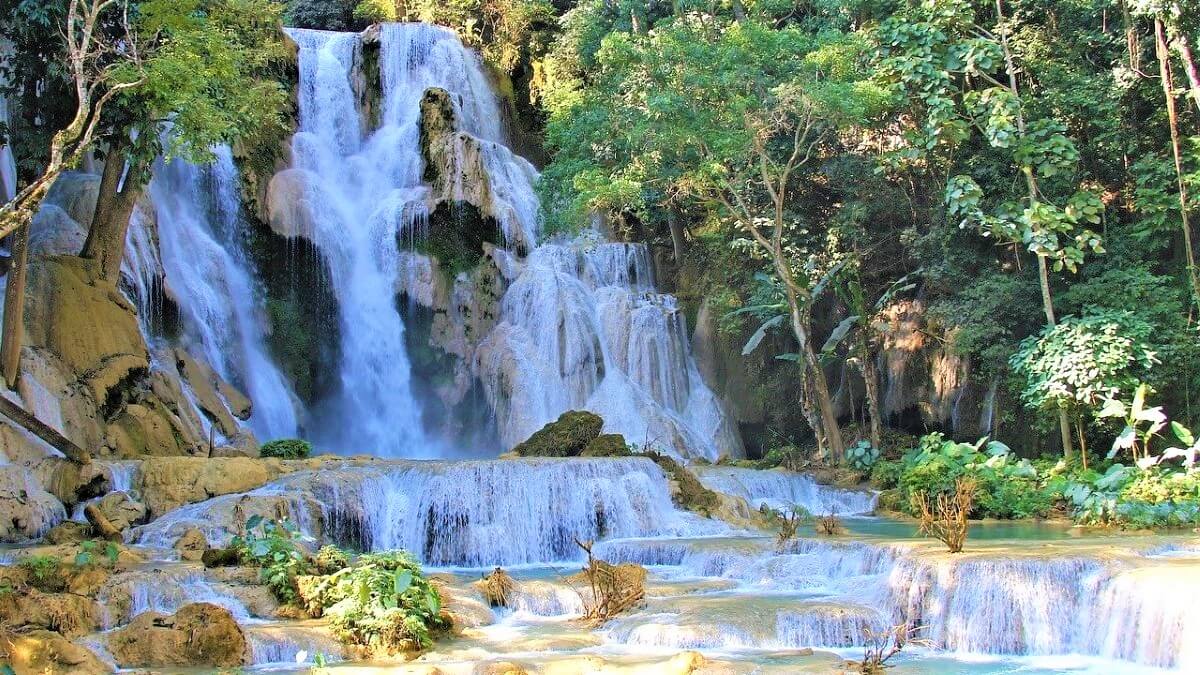
1. Go swimming in the clear water of Laos’ most beautiful waterfall, Tat Kuang Si Falls
The most beautiful waterfall in Laos? Even in Thailand, where there are also many waterfalls, people will recommend you the Tat Kuang Si waterfalls in Laos! And indeed, it is beautiful! Beautiful blue clear water and in some places you can swim very well! The Tat Kuang Si Falls are located 25 kilometers west of Luang Prabang and is ideal for a lovely relaxing day trip. Before you get to the waterfall you will walk past a shelter for bears. These bears have had a sad life and at this center they are allowed to be “bears” again.
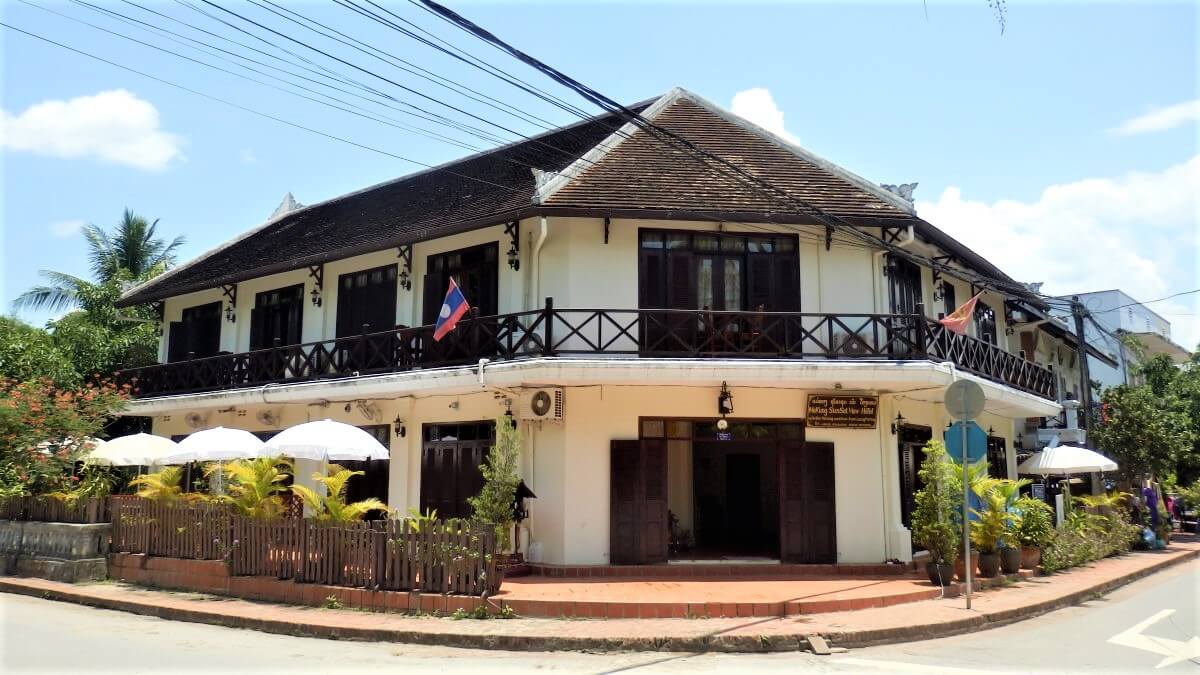
2. Wander around the historic French center
Would you like to take a nice stroll through Luang Prabang? Head to the old town and enjoy the many colonial buildings this city has to offer. Enjoy a delicious lunch along the Mekong River and visit the Royal Palace or some temples like the Wat Xieng Thong.
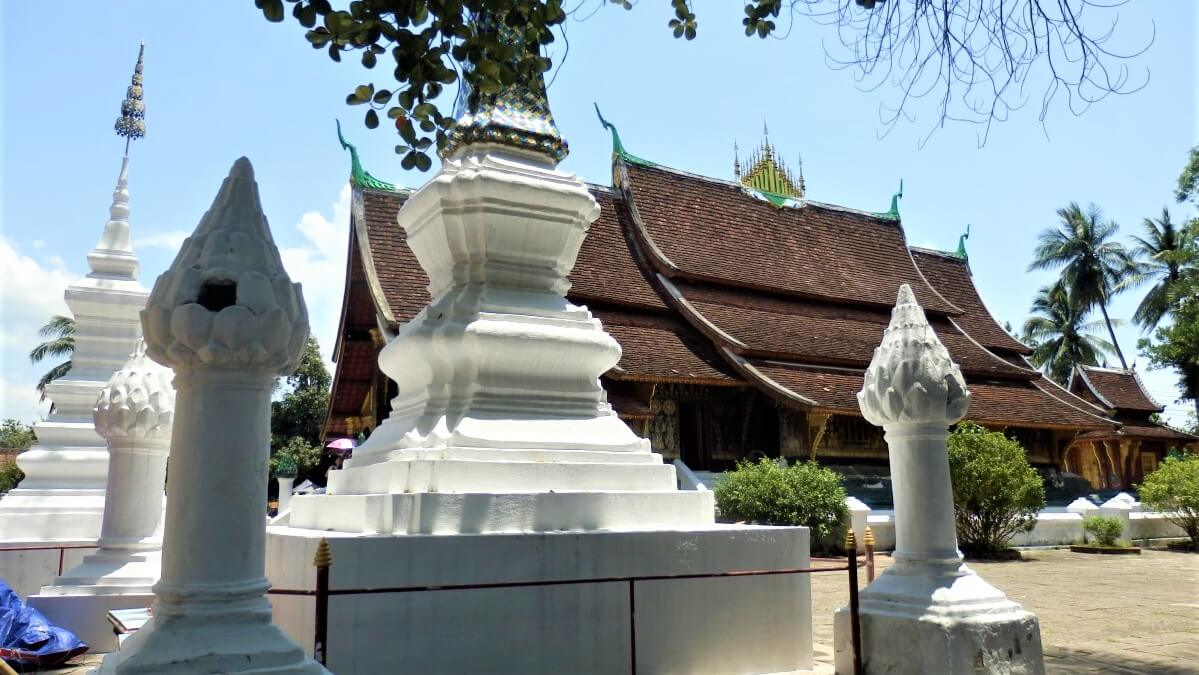
3. Discover the Wat Xieng Thong, a royal temple
Located east of the Royal Palace, Wat Xieng Thong monastery is the city’s most famous shrine. It was built in 1560 under the leadership of King Settharhirath (1534-1571) and was an important temple for the royal family. For example, several kings were crowned here. In addition, this temple is also home to beautiful mosaics made of colored glass.
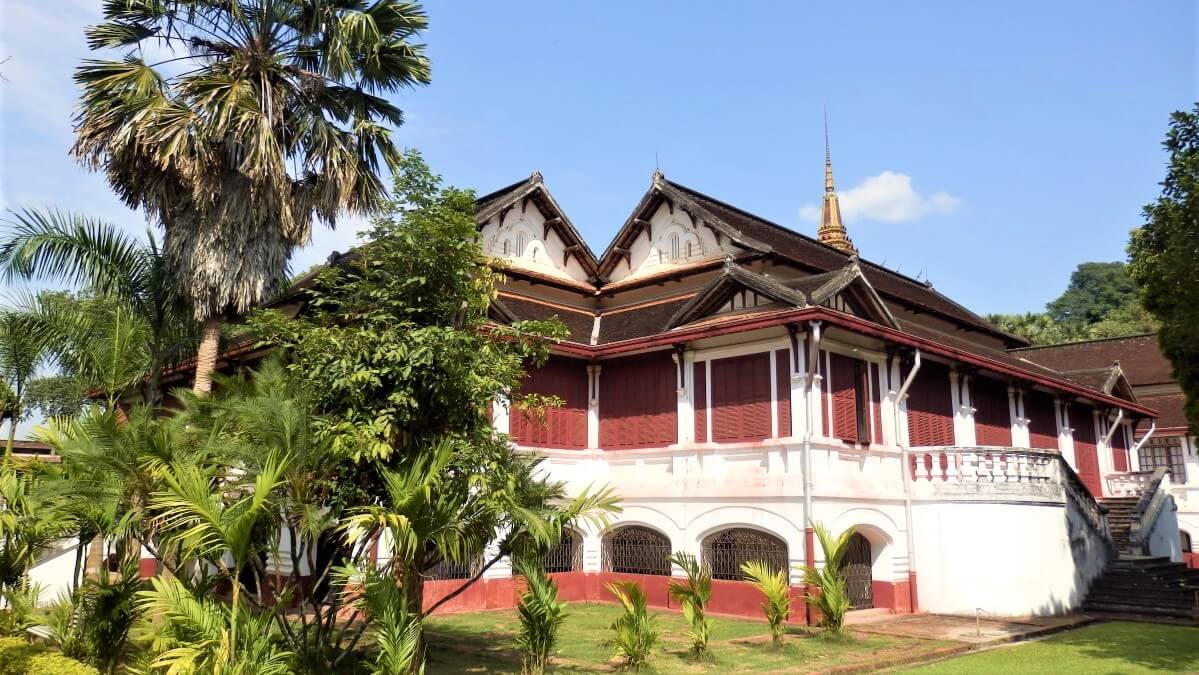
4. Dig into the history of Laos at the Royal Palace
Since 1904, this was the place where the royal family resided during the French colonial rule. When the monarchy was overthrown by the Communists in 1975, the royal family was sent to a camp and eventually killed. Since 1980, the Royal Palace has been a museum whose interior has been left reasonably intact. An interesting place to learn more about the history of Laos.
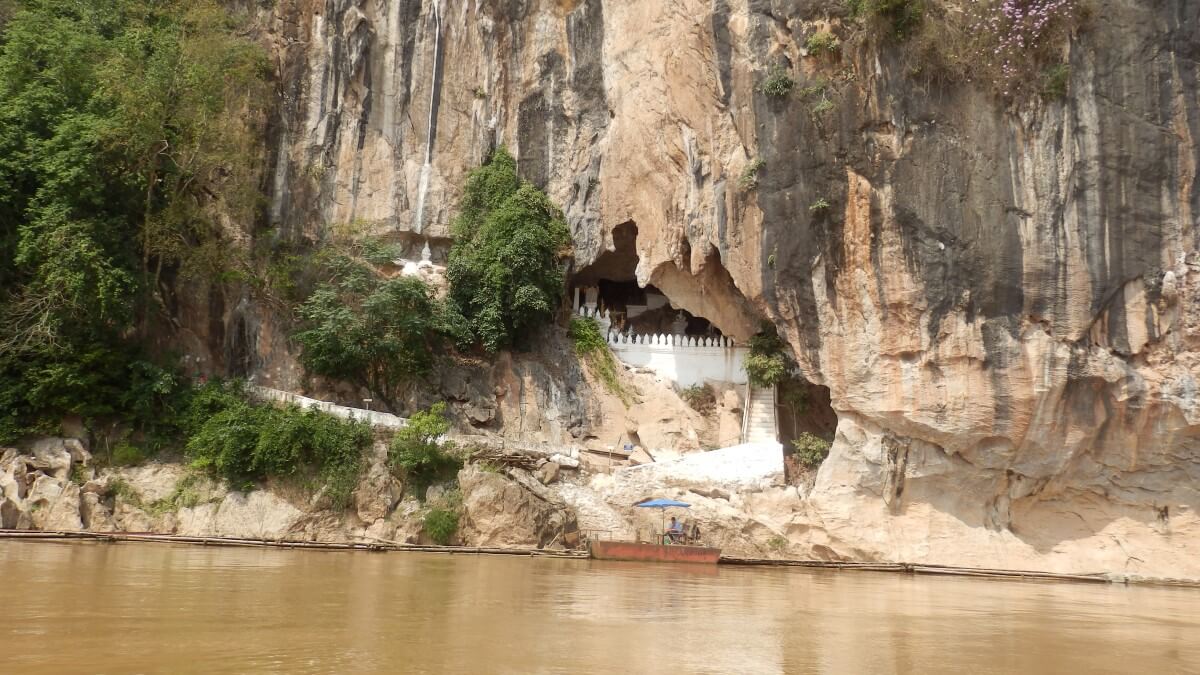
5. Pak Ou Caves, the beautiful caves on the Mekong River
25 kilometers northeast of Luang Prabang are the Pak Ou Caves. These caves lie along the Mekong River and house a large number of Buddha statues. In Laos, the Pak Ou Caves are called the Tam Ting Caves, which means caves of the thousands of Buddhas. For a ticket by boat, head to the old town on the Mekong. The boat stops at a number of small villages along the way, including ‘Whiskey Village’ for a Lao alcoholic refreshment.
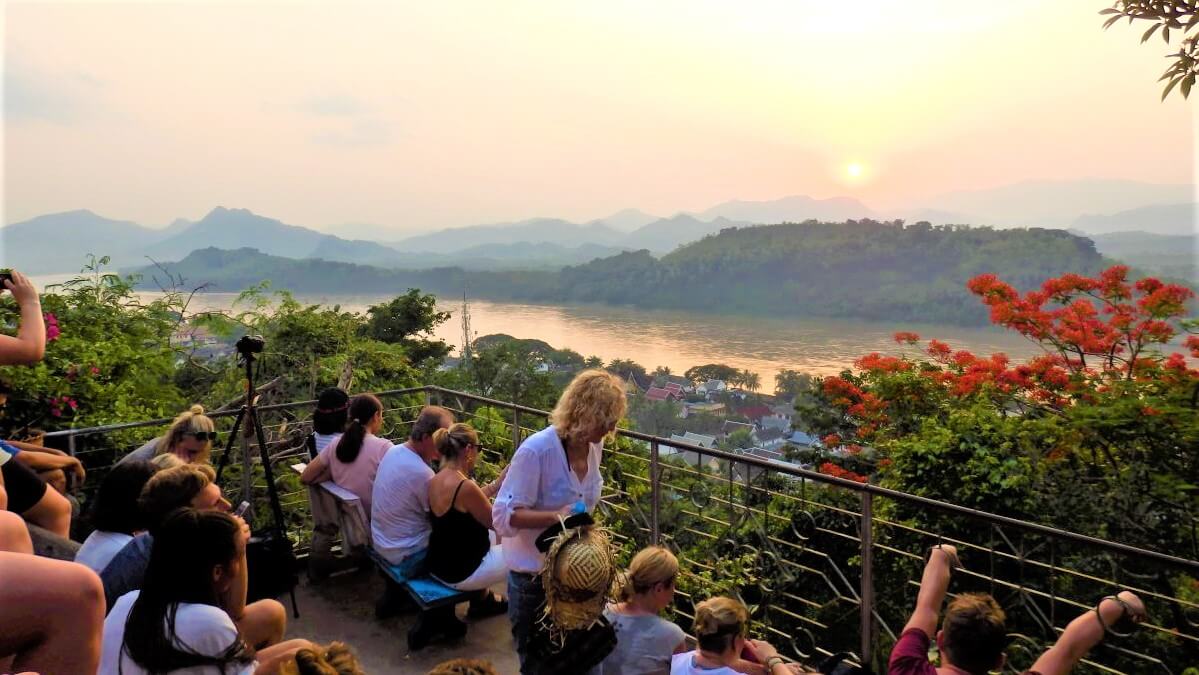
6. Enjoy the sunset from Phu Si Hill
For a beautiful sunset in Laos, head to Phu Si Hill. This hill will pass you several times when you go to the old town and gives you a beautiful view of the surroundings. On this hill there are a number of small temples that are definitely worth checking out. Come here in the afternoon so you can experience a beautiful sunset here.
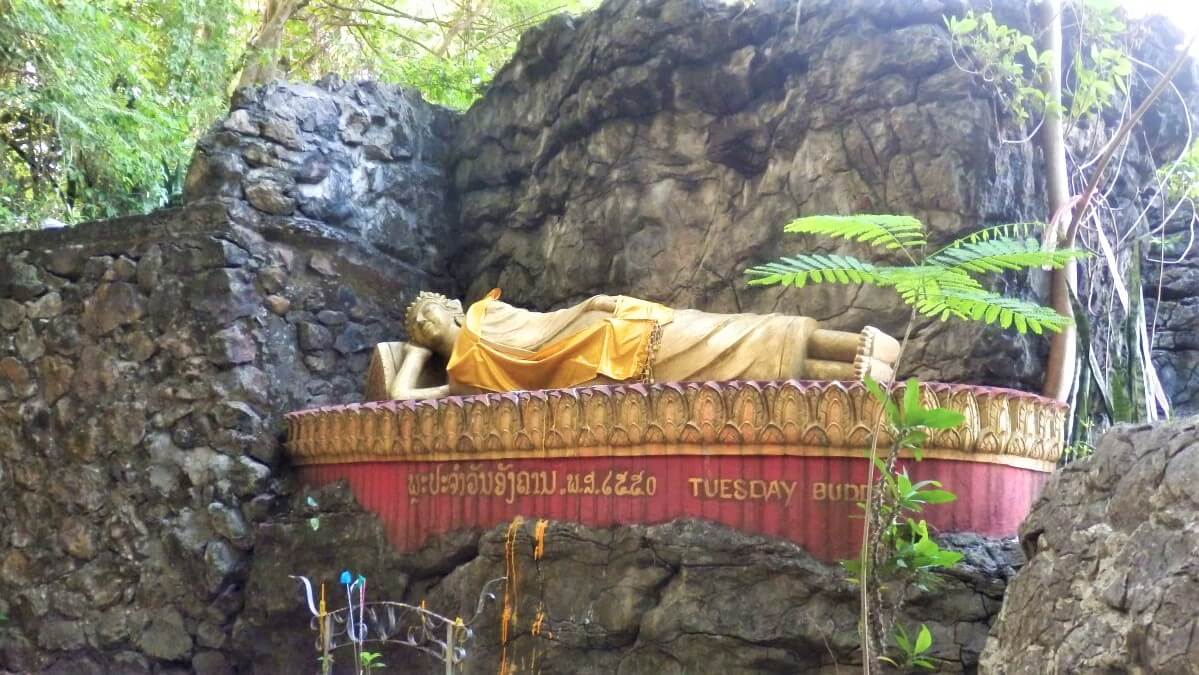
7. Visit the UXO Laos Information Centre
Did you know that Laos is the most bombed country ever in human history. At the time of the Vietnam War, the Americans tried to block the Vietcong’s road, which ran through Laos, among other places, by bombing it. The UXO Laos Information Centre, 2 kilometers south of the city center is free to visit and gives an insight into the Vietnam War and the effects it still has on the Laotian people today. People still die as a result of abandoned mines in the countryside.
Finally: In and around Luang Prabang there are a lot of different small temples. When you cross the Mekong River by boat and go to the right you will also come across a number of little temples, such as Wat Chomphet and Wat Xieng Maen.
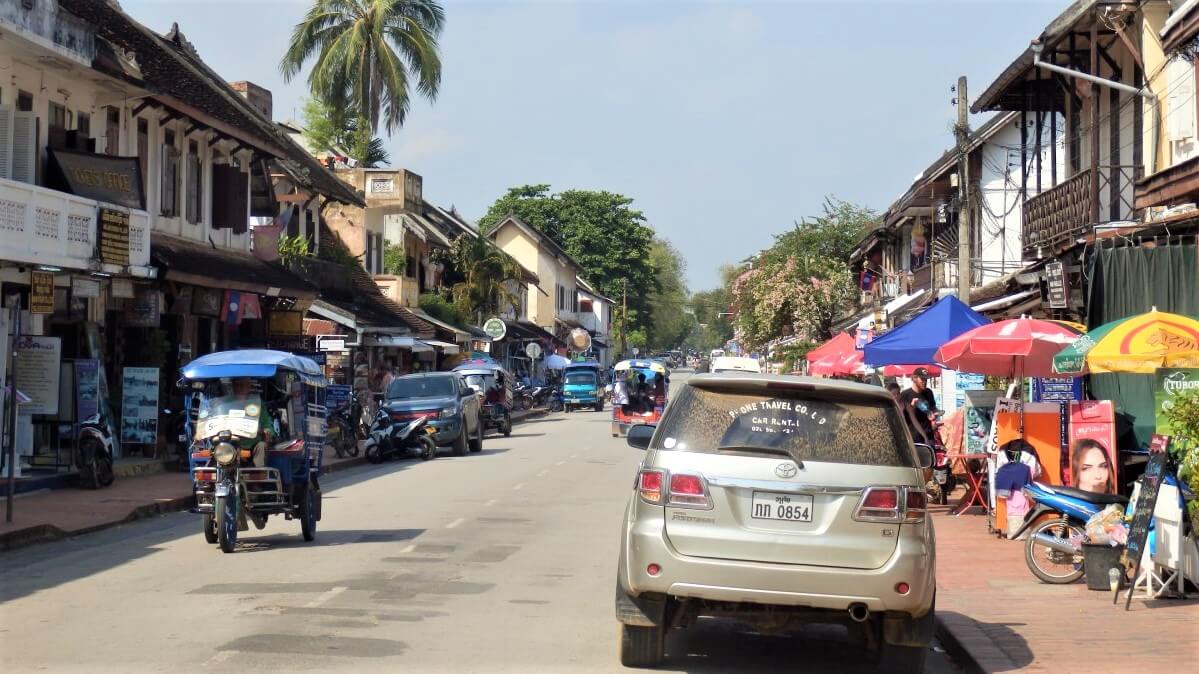
Accommodation – Where to stay in Luang Prabang?
In Luang Prabang, the French colonial era is still clearly visible in the old town. French colonial houses are characteristic of the city center. Nice eateries, cozy bars and nice accommodation complete a visit to Luang Prabang!
The center (Xieng Mouane) is located on the Mekong River near the Royal Palace. A hotel or hostel around Phu Si Hill is the best location. You can get a bed in a dormitory in Luang Prabang from as little as 3 euros and in terms of hotels, there is a wide range of choice for every price range.
Looking for accommodation? Click here for hotels or guesthouses in Luang Prabang
Tip: In the morning there is a Morning Market in Luang Prabang and in the evening … you guessed it … a Night market. These markets are nice to visit once (or several times). For a good price you can buy exotic products, delicious Laotian food or nice souvenirs. Both markets are located west of Phu Si Hill and close to the Mekong River.
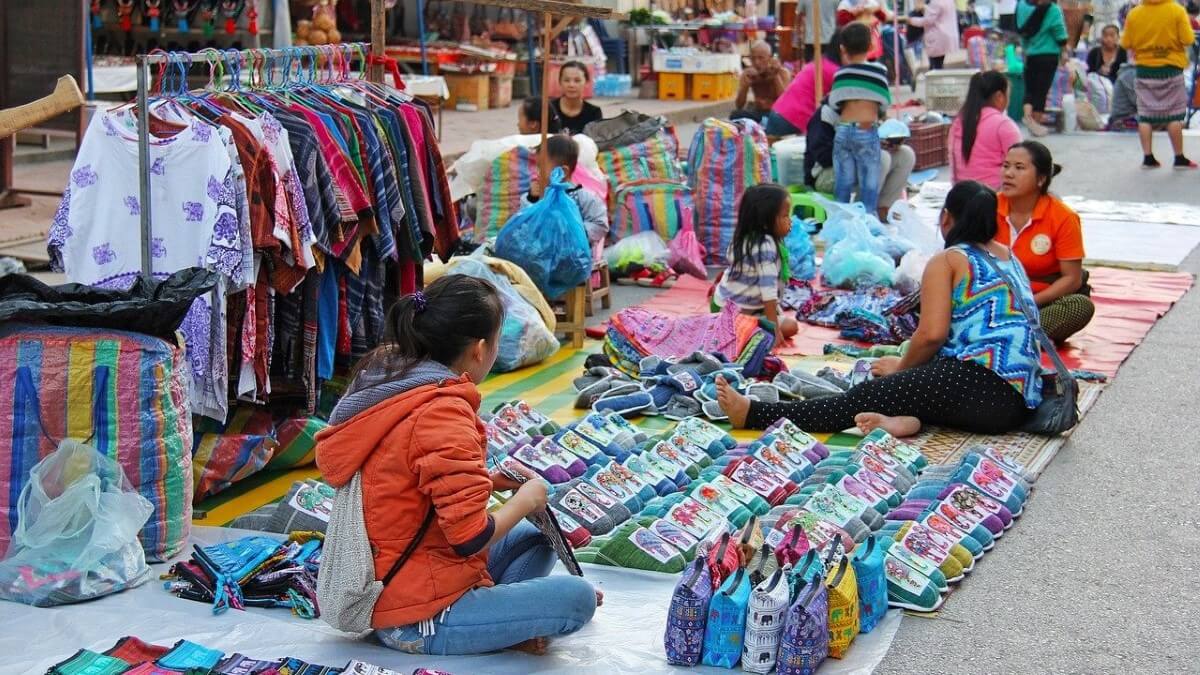
Transport – How to get to Luang Prabang?
By plane: Luang Prabang International Airport is located 4 kilometers northeast of the city center. Together with Vientiane airport it is the busiest airport in the country. It is mostly used for national flights, but daily flights also depart to Thailand, Cambodia, Vietnam, China, Japan and Singapore. There are no buses from the airport to the center, so you have to take a taxi or a tuktuk. Or ask the hotel for a pick-up!
Bus: Luang Prabang has a north and south bus station. The northern bus station is located west of the airport and is used for a number of destinations in the north and east of the country. The most used bus stations are the southern bus station and the nearby Naluang minibus station for destinations such as Vang Vieng and Vientiane, but also minibuses to the north, such as Nong Kiau.
By train: Luang Prabang does not have a train connection at the moment, but the Chinese are making a connection between Kunming (China) and Vientiane with a stop in Luang Prabang. This connection will probably be opened in 2022.
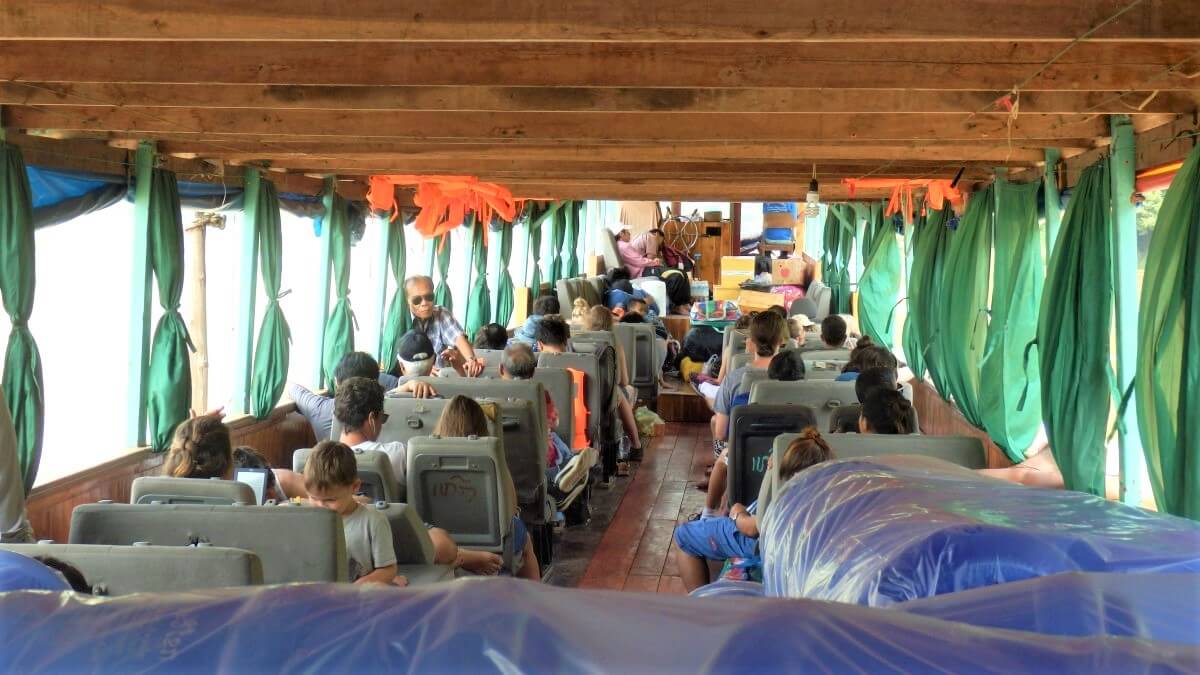
By boat to Thailand?
A few kilometers northeast of Luang Prabang, the boat leaves for Thailand. Tickets can be bought at the quay and the boat leaves around 8 o’clock in the morning. It is also possible to buy a ticket plus transport at your hotel or hostel (extra commission), but then you are assured of a place on the boat.
The boat takes about 8 hours to get to Pakbeng. Pakbeng is halfway the route and is a small town in Laos, but with a large amount of hotels, hostels and guesthouses. The next day you leave around 8 am and arrive in Huay Xai around 5 pm. From here you take a (mini)bus or taxi to the border with Thailand and then continue to Chiang Mai or Chiang Rai.
Costs for the boat for 2 days: +- 250.000 Lao Kip
Tip: Buy food and drinks in advance (there are noodles for sale in the boat) and possibly bring a pillow to sit on. The seats in the boat consist of old car seats and that can get a bit annoying after a while.
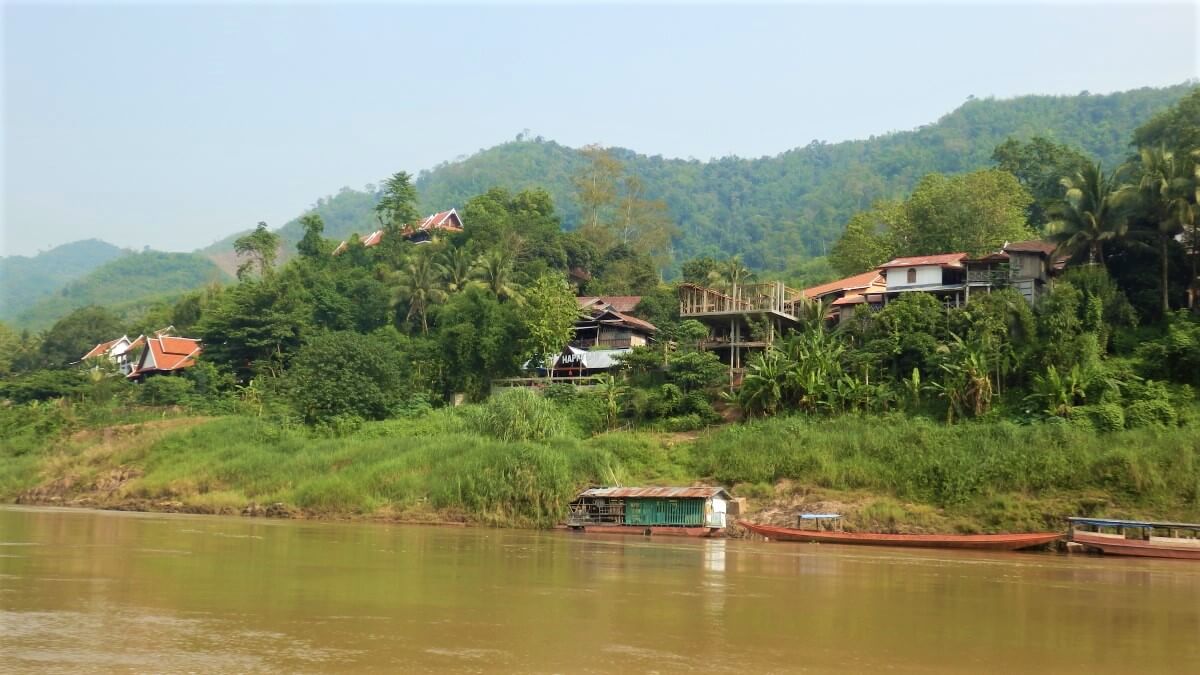
Next Destination?
On to Thailand by boat for Chiang Rai or Chiang Mai or direction Vang Vieng and Vientiane?
Do you have any tips, comments or ideas about these Luang Prabang in Laos traveligds? If so, feel free to leave a comment below.